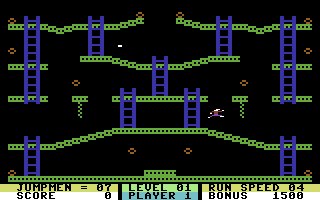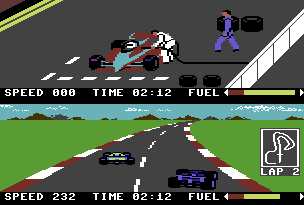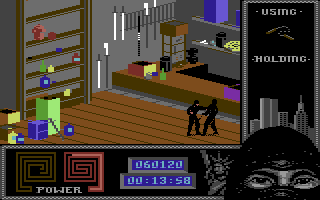Review: Jumpman (Wii Virtual Console)
Hop to it!
As if bomb squads don’t have a hard enough time, Jumpman is tasked in this platform game with defusing bombs in Jupiter Headquarters, a place that clearly needs a serious heath and safety check. Precarious platforms and all manner of hazards await our athletic chum in this dated, playable and frequently frustrating platform game.
With Jumpman originally arriving on 8-bit computers in the early 1980s, it’s not much to look at, and the sound is guff, but designer Randy Glover had a wicked sense of humour and a real sense for level design. Therefore, each of the 30 levels brings its own set of dangers, such as ledges that vanish once you defuse a bomb, UFOs that dart around the screen, and manic robots hell-bent on killing you in the face. Also, when you inevitably come a cropper and tumble down the platforms to your untimely demise (and a jolly, slightly sarcastic rendition of the death march), you still defuse bombs that you bump into and can therefore sometimes complete a level during your dying moments, which is a nice touch.
Aside from poor aesthetics, niggles with Jumpman largely relate to some screens being absurdly difficult and controls being twitchy on the faster levels. However, if you can put yourself in the mind of a 1980s gamer—it was a time when gamers were real men: hardcore, but with mullets—you’ll find Jumpman a compelling, challenging, and occasionally maddening game.
Jumpman is available now for 500 Wii points (about £3.50). It’s tough, so wimpy gamers need not apply. Mullets, however, are optional.

Ignoring the ladder entirely, our hero aimed for the bomb by leaping majestically.
Comments Off on Review: Jumpman (Wii Virtual Console)



